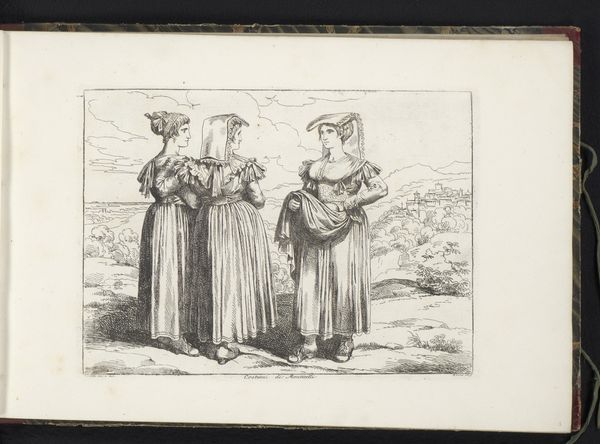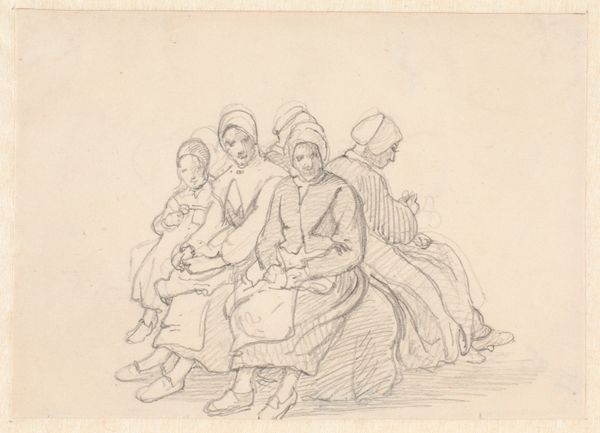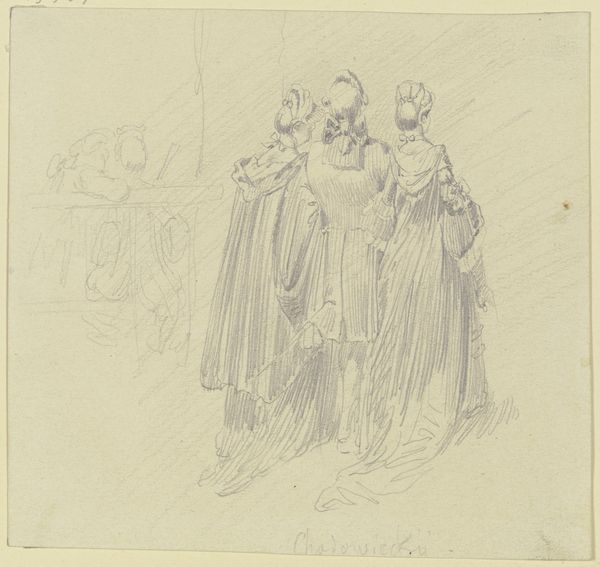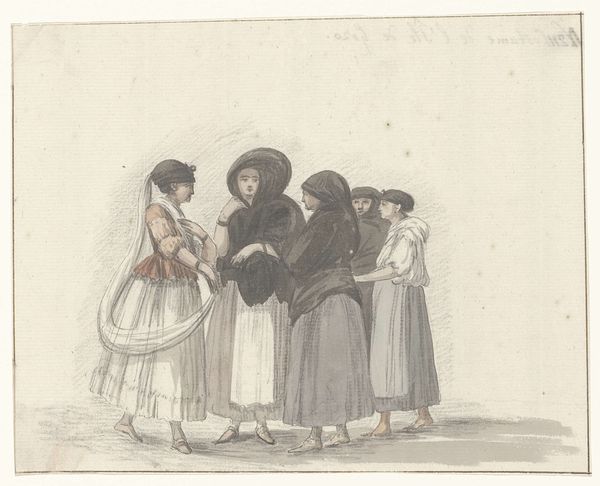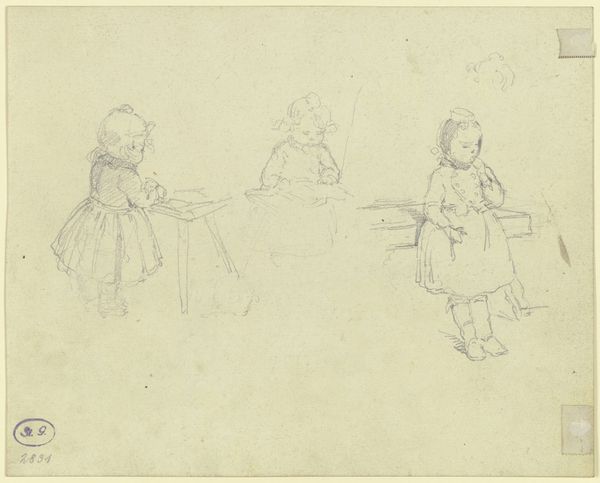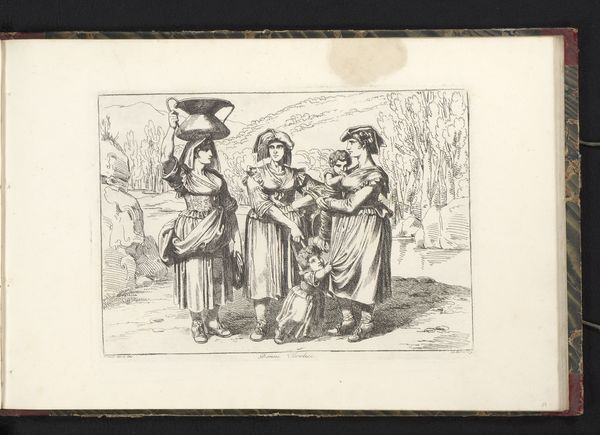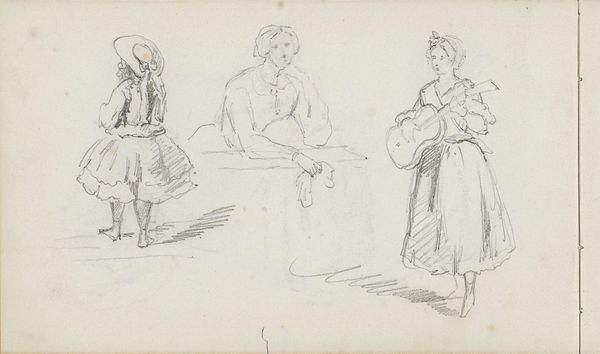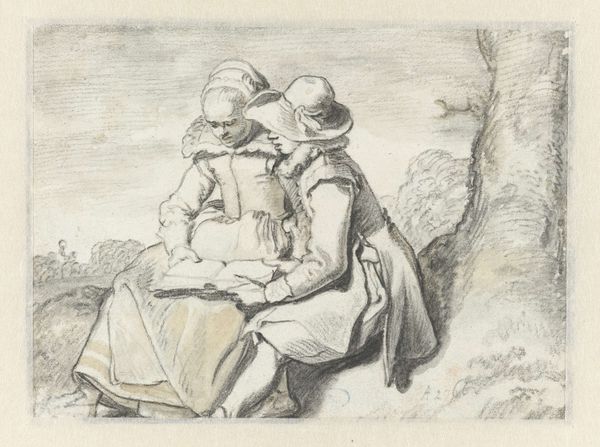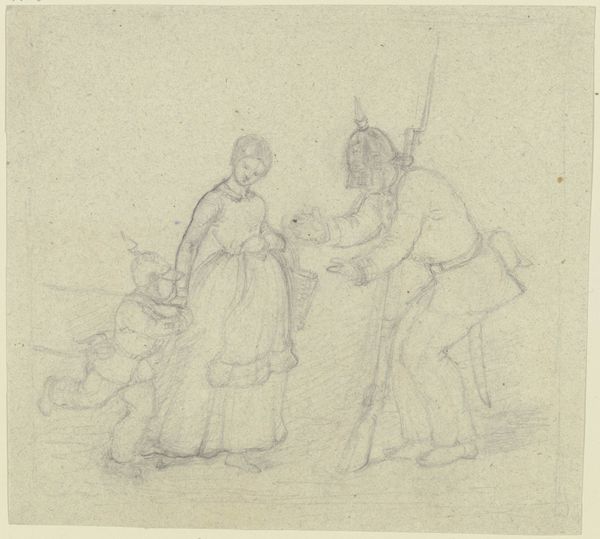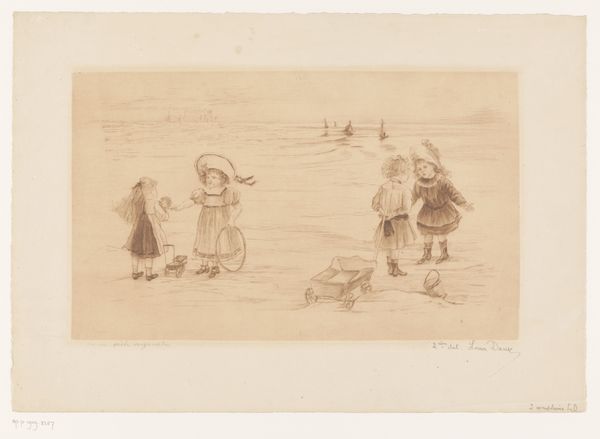
drawing, pencil
#
portrait
#
drawing
#
figuration
#
pencil
#
genre-painting
#
realism
Copyright: Public Domain
Curator: Right, let's take a look at this pencil drawing from the Städel Museum's collection. It's titled "Drei Bauernmädchen in oberhessischer Tracht," or "Three Peasant Girls in Upper Hessian Costume," by Carl Engel. Editor: My first impression is the vulnerability in this work. The girls stand huddled together, yet there's an air of self-assuredness about them despite the rather basic rendering of their clothing. Curator: Costume became increasingly codified and regulated during this period. Dress reflected communal identity and socio-economic status. Think of how powerful, even subversive, a painting that showed these rural women as more than types could be. Editor: Subversive how? Because they are depicted in their everyday clothes instead of romanticized garb? Or are you suggesting that Engel empowered them? Curator: Perhaps. He was, after all, working within a genre of realism that focused on observable fact. It's worth considering that the relative detail with which he rendered their clothing may point to the artist having documented it as cultural information and anthropological record. The way he depicts these girls serves as a time capsule. Editor: This also can be considered in a historical moment when local particularities were flattened by standardizing notions of national culture and identity. This piece seems very much to belong in the trend toward interest in folk culture at the time. We shouldn't overstate their agency in front of the painter; we have to ask if the intention behind documenting such ‘folk types’ had something to do with reconfirming the norm, of distinguishing them from modern bourgeois subjectivities. Curator: That's a valid point. In their somewhat solemn expressions, one can sense a confrontation with modernity even then. The backdrop of simple, unfinished architecture reinforces the idea that their existence might be precarious. Editor: It feels as though Engel wanted us to understand the value, both cultural and individual, within these women, to highlight how culture operates in our identities. These drawings reveal so much. Curator: Exactly. In a fleeting moment, these ordinary women stand for us, in their resilience and in our shared cultural histories.
Comments
No comments
Be the first to comment and join the conversation on the ultimate creative platform.
